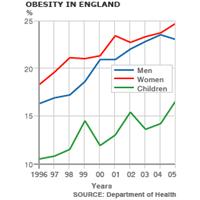
London: The Pacifica Day Spa has recently opened its doors in London’s Nottinghill with the ultimate in pampering and rejuvenation treatments.
Pacifica recognises the stress of modern living and has developed a full range of services to fit in with and complement a busy lifestyle. From the minute you enter the Pacifica Day Spa you will be taken on a unique journey that has been created specifically for you.
Designed to stimulate all your senses and transport you to a world of tranquillity, you will enter an exotic world that combines the colours, textures and sounds of the Pacific. Listen to the waterfall, smell the aroma of tantalising essential oils, and pamper yourself in stylish and comfortable surroundings.
Pacifica combines the latest developments in skincare with the expertise of the most highly trained beauty therapists. All the therapists are CIDESCO trained (the highest level of education in the field of aesthetics and the only degree recognised worldwide) and are specialists in detox, anti ageing, pigmentation, and acne, as well as being able to recognise other skincare conditions and disorders that clients might have.
My vision for Pacifica Day Spa was to create a sensuous, state-of-the-art space that provides the highest level of customer service, excellent hygiene standards and top notch therapists who are well educated and can be seen as trusted advisors. I wanted to create an escape from the pressures of city living and believe that Pacifica Day Spa is the perfect place to rejuvenate and unwind, says Kathleen Granados, Director of Pacifica Day Spa.
Pacifica Day Spa offers an extensive menu of Dermalogica, Elemis, O.P.I and Lycon treatments, delivering the very best services to meet individual needs. The spa therapy menu has been created to respect the bodys complex physiology and work in synergy with the skin, body and mind. In addition to booked treatments, clients are offered a complimentary aroma steam treatment that is customised with a personal blend of essential oils to balance, relax or invigorate. The spa also invites clients to enjoy a complimentary tea, coffee or juice in the cosy relaxation area, as well as learn more about their skin and sample products at the skin bar.
pacifica SPA-THERAPY MENU
The spa boasts an extensive menu of Elemis and Dermalogica treatments as well as Pacificas own bespoke therapies based on Swedish and Thai techniques, designed to indulge, detox and de-stress.
Treatments include a wide selection of facials such as the revolutionary Elemis tri-enzyme facial which involves safe resurfacing of the upper layers of the skin, Elemis Skin IQ Facial, an anti-ageing facial for male skin that adapts to super boost the skin and protect against the effects of shaving and environmental damage, through to the Dermalogica Facial which includes their signature Face Mapping technique which analyzes the 14 zones of the face in order to provide a thorough skin analysis.
Body treatments include for example Thai Herbal Ball Massage, which is a combination of deep tissue and Thai massage designed to release tension, strengthen your metabolism, and rejuvenate the skin and release toxins, Elemis Exotic Coconut and Milk Ritual Wrap excellent for skin smoothing and softening, combining an exotic wrap with a facial pressure point massage and de-stress scalp treatment to stimulate the senses and Aromatherapy Body Massage a gentle, relaxing massage using a variety of essential oils to relax, re-energize, soothe aching muscles or stimulate your circulation.
In addition to individual body and facial treatments, Pacifica Day Spa offers waxing, self tanning, manicures and pedicures, as well as courses of treatments to prepare the holidaymaker, the mother or bride-to-be.
Whatever the excuse for pampering, enjoy the ultimate relaxing and sensory experience at Pacifica Day Spa.
LOCATION AND OPENING DETAILS
1 Courtnell Street, Notting Hill, London W2 5BU
T. 020 7243 1718
E. info@pacificadayspa.co.uk
W. www.pacificadayspa.co.uk
OPENING HOURS
10-9pm Monday to Friday
10-7pm Saturday & Sunday
THE DESIGN
Developed and influenced from therapies around the world, the spa reflects a blend of Asian cultures including Pacific Islands, Thailand, Bali and Polynesia. The aim was to create a spa environment that transports clients away from their London lives to an enticing destination exciting the senses with the colours, aromas and materials of the Orient.
On entering the reception area, you will be immediately transported to a foreign destination with Asian inspired furnishings and water gently trickling down a wall feature. Drift away in the relaxation area which is decorated in a calming shade of green, where flames flicker in the fireplace and the air is filled with a gentle fragrance to soothe the soul.
As you descend to the downstairs treatment rooms, you enter a rich, warm and earthy environment, with walls decorated in rich chocolate, cushions and throws fabricated from hand woven silks, and basins of marble the gentle floor lighting adds to an environment that offers an exotic, yet secure and homely feel.
THE FOUR SENSORY SUITES
Earth, Air, Fire, Water
Earth suite is for mother and baby massages
Fire suite forms part of the couples treatment area and is primarily used for body treatments
Water is an adjoining suite to Fire and caters for wet treatments such as seaweed wraps.
Air is a corner treatment room that is primarily used for facial treatments
AromaSteam capsule: clients are offered a complimentary 15 minute aroma steam treatment that can be booked at time of appointment. The AromaSteam is your own private steam sauna that is customised with a personal blend of essential oils to balance, relax or invigorate.
THE COMPANY PHILOSOPHY – POINTS OF DIFFERENCE
1. Pacifica Day Spa is an intimate, sensuous, state-of-the art sanctuary in the heart of London.
2. Pacifica Day Spa combines the latest developments in skincare with the expertise of the most highly trained beauty therapists.
3. Every therapist at Pacifica Day Spa is CIDESCO trained, this is the highest level of education in the field of aesthetics and the only degree recognised worldwide. This ensures clients receive the very best treatment possible as well as truly expert advice in matters of skin and body health.
4. Because all of Pacificas therapists are CIDESCO trained, treatments will be consistently excellent. Clients will never be disappointed to find they cant book a favourite therapist for a particular treatment all treatments will be performed in the same way and to the same standard by every therapist, every time.
5. Pacifica Day Spa offers an excellent choice of treatments for men and women, that relax, rejuvenate, repair and revive both body and mind. Indulge in luxury pampering but dont forget weekly grooming essentials.
6. Pacifica Day Spa practices the highest standards of hygiene at all times, extra steps, such as personal manicure tools for clients, help make the spa a place your can trust.
7. Pacifica Day Spa provides a relaxing haven in the heart of London. With the scents, sights and sounds of the Pacific, you can give yourself a luxury holiday without packing a suitcase.
8. Pacifica Day Spa can be booked exclusively for parties or business functions. Catering can be organised and the spa even has WiFi to ensure clients can stay in touch with the office.
9. Pacifica Day Spa is full of extra touches to make it a special place, from a session in the complimentary AromaSteam Capsule, to free skincare sampling and a generous loyalty programme, Pacifica offers a little bit more than most.
THE COMPANY PHILOSOPHY – THE PEOPLE BEHIND THE DREAM
Kathleen Granados/Director
Pacifica Day Spa is the vision of Kathleen Granados. Prior to coming to the UK, Kathleen graduated in business from Berkeley and worked in both consulting and entertainment marketing industries.
Kathleen says: I wanted to create an environment where customers could go and feel safe, receiving value for the money they spent. Over the years, I have been a frequent customer of spa treatments and felt that I could bring some of the customer service standards and benefits that we would expect in a US spa to London.
Kathleen feels that it is particularly important to know a business inside out so she trained as a beauty therapist herself and did the CIDESCO training degree. This not only gave her greater admiration for the therapists with whom she works but they in turn have respect for her as someone who really understands the beauty therapy world. Kathleen strives to make Pacifica a place of employment where therapists are satisfied, challenged and encouraged to be the very best in their field. Whats more she is now in a much better position to advise her friends and clients about treatments that would be most beneficial for them.
Anita Patel/Operations Manager
To strengthen Pacifica, Kathleen joined forces with Anita Patel who has worked in the beauty industry for over 12 years and trained with Noella Gabriel from Elemis. Anita is a great asset to the team and was a former CIDESCO instructor, which ensures that all our therapists are knowledgeable, experienced and will carry out treatments to the level I expect, says Kathleen. Anita has worked with many brands including Elemis, Dermalogica, Thalgo, Decleor, Clarins, St. Tropez, Jessica among others.
CIDESCO TRAINING
CIDESCO is the only qualification recognised worldwide.
Unlike other beauty therapy qualifications where the student is assessed immediately by their instructor, CIDESCO therapists are given an exam at the end of the program and they are examined by appointed examiners from around the world. They are expected at this point to have carried out the needed hours of practical work plus theory and deliver a thesis focused on any topic related to health and beauty.
CIDESCO students are passionate about the industry and spend a significant amount of time on their exam preparations and thesis. This alone means that they are interested in health and beauty and care about being knowledgeable for themselves and their clients.
This qualification goes into an in depth level of anatomy and physiology coupled with the practical hours. The training is intense and ensures that the therapists undergo educational training coupled with over 1200 hours of practical training. (This means that each therapist must do at least 500 hours of manicure, 500 hours of waxing, 500 hours of massage, 500 hours of facials, etc before they are even tested)
www.cidesco.com










